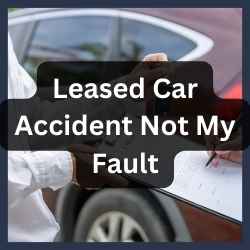If you or a loved one has suffered harm in Bellevue or greater King County, understanding personal injury laws is crucial for safeguarding your rights and claiming fair compensation. From strict filing deadlines to Washington’s unique rules about fault and government claims, knowing how the law works will empower you to act quickly and make informed choices. In this in-depth guide, we break down the eight most essential things to know—complete with local insights, practical advice, and expert tips from R Martin Law Group—to protect your future after an accident.
Understanding the Foundations: What Makes Washington Personal Injury Laws Unique?
Personal injury laws in Washington differ from those in many other states. They govern how, when, and against whom you can bring a claim if you’ve been injured due to another’s negligence. Whether your accident happened on I-405, a rainy Bellevue crosswalk, or in a government office, these rules determine compensation, evidence standards, and procedures.
- Statute of Limitations: Typically just 3 years to act!
- Comparative Fault: Your compensation adjusts to your share of responsibility.
- Suing Government: Requires very specific notices and deadlines.
- No Non-Economic Damages Cap: Full compensation possible for pain and suffering.
According to Washington State Department of Transportation (WSDOT), there were over 1,500 injury collisions in King County alone in 2023. Many of these incidents fall under these intricate legal provisions!
What Causes Action in Washington Personal Injury Claims?
Washington personal injury laws cover a wide array of scenarios. The most common causes include:
- Auto accidents (car, truck, bicycle, or pedestrian incidents on city streets or highways)
- Slip-and-fall injuries (at businesses, apartment complexes, or public facilities in Bellevue)
- Medical malpractice (including latent injuries where harm isn’t immediately obvious)
- Workplace accidents (with restrictions on suing employers—see FAQ below)
- Injuries caused by government entities (including city buses, sidewalks, or public property hazards)
Every case must show that another party owed you a duty of care, breached it (by acting negligently or recklessly), and directly caused your documented injuries—this gets to the heart of what evidence you need to prove negligence in a Washington personal injury case.
Washington’s Three-Year Statute of Limitations: What Every Victim Needs to Know
How does Washington’s statute of limitations affect personal injury claims? This is one of the most consequential parts of your case. Washington law (RCW 4.16.080) gives you just three years from the date of your injury to file a lawsuit. If you miss this deadline, your claim will almost always be dismissed, regardless of its merits.
- For most accidents, the clock starts on the date of the incident (e.g., a collision or fall).
- For minors, the three-year window doesn’t start until their 18th birthday.
- If the injury (or its cause) was not immediately apparent, the “discovery rule” may extend the deadline.
- Shorter timelines apply when suing government entities – as little as 60 days for notice!
According to King County Court records, delayed or missed filings are among the most common reasons Bellevue injury victims lose their rights.
How Does Comparative Fault Impact Compensation in Washington State Injury Lawsuits?
Unlike some states that bar you from recovery if you’re more than 50% at fault, Washington’s pure comparative fault rule (§4.22 RCW) lets you recover damages even if you were mostly to blame—just not for the portion of fault assigned to you. This means:
- If you’re 20% at fault, you recover 80% of your damages.
- If you’re 80% at fault, you still get 20% compensation.
- This applies in auto wrecks, slip-and-falls, dog bites, and nearly every injury case.
Insurers often attempt to inflate your “share” of fault—to minimize their payout. A persistent, locally respected law firm like R Martin Law Group can aggressively challenge inflated fault assessments and protect your interests.
In practice, proving your case (and limiting your percentage of fault) comes down to two things: gathering compelling evidence and working with a strategic Bellevue personal injury lawyer attuned to local court trends.
What Evidence Do I Need to Prove Negligence in a Washington Personal Injury Case?
Every successful injury claim in Washington rests on proving negligence by a “preponderance of the evidence.” You must show:
- Duty of Care: The defendant owed you a legal responsibility (like driving safely).
- Breach of Duty: The defendant failed to uphold that duty (e.g., ran a red light or didn’t salt a slippery walkway).
- Causation: The breach directly caused your injury.
- Damages: You suffered measurable physical, emotional, or financial harm.
Types of evidence that strengthen your case:
- Medical records, imaging, and expert evaluations
- Police or incident reports (especially for auto or slip-and-fall accidents)
- Witness statements and contact details (ideally collected early)
- Photos/videos of the accident scene and your injuries
- Repair estimates, lost wage documentation, and receipts
Tip: Immediate action preserves evidence and strengthens witness recollection. Act quickly after any Bellevue accident, and consult with a local attorney before the trail goes cold.
What Am I Entitled to? Economic and Non-Economic Damages Explained
Washington personal injury laws recognize two broad categories of compensation:
- Economic Damages: Tangible losses like medical bills, lost wages, rehabilitation, property damage, and out-of-pocket expenses.
- Non-Economic Damages: For pain and suffering, emotional distress, loss of enjoyment of life, or disfigurement.
Unlike states such as California or Texas, Washington puts no cap on pain and suffering awards in most personal injury cases. Juries in Bellevue and King County can award whatever amount they see fit, based on the severity and impact of your injuries. For instance, King County Superior Court has issued seven-figure pain and suffering awards especially in catastrophic auto, cycling, or medical cases.
Sample Categories of Compensation in Washington State
| Category | Example | How Calculated |
|---|---|---|
| Medical Expenses | ER visits, surgery, therapy, prescriptions | Documented by bills & receipts |
| Lost Income | Missed work (past & future) | Pay stubs, W-2s, employer letters |
| Pain & Suffering | Physical pain, emotional distress | No statutory cap Based on jury assessment |
| Property Loss | Vehicle damage, mobile phone, bicycle | Repair/replacement value |
| Loss of Consortium | Strain on family or relationships | Expert testimony, impact statements |
What Are the Rules for Suing a Government Agency in Washington Personal Injury Cases?
If your accident was caused by a government agency—like the City of Bellevue, King County Metro Transit, or a public school—Washington law imposes special procedural rules:
- File a formal notice of claim first: You usually cannot sue directly. Washington requires that you submit a written “tort claim” notice to the government entity, which then has 60 days to review it before you’re allowed to file a lawsuit.
- Shorter filing periods: Some agencies set filing deadlines shorter than three years—sometimes just six months!
- Stricter evidence and documentation: Claims against the government face higher hurdles for “negligence” and fault. For example, to sue Bellevue Parks & Community Services over a playground injury, you would need proof they had advance notice of a hazard and failed to act in time.
Navigating these rules in King County takes skill, speed, and specific legal language; many claims fail for missed or incomplete notice.
Practical Guidance: Real-World Examples from Bellevue and King County
Example 1: Auto Accident on NE 8th Street
A Bellevue commuter is sideswiped by a distracted driver. Police report blames both parties: one for speeding, one for a failed lane change. Claimant’s injuries and lost wages total $120,000. Police assign 25% fault to the injured party. After negotiations, insurance pays 75% of total damages: $90,000.
Example 2: Slip-and-Fall at Bellevue Square Mall
A shopper slips on an unmarked wet floor; security video reveals a “caution” sign was missing. Quick witness statements and cell phone photos secure a strong claim. Victim receives medical coverage, lost wages, and compensation for pain and suffering—totaling over $150,000.
Example 3: Bicycle Crash Involving King County Metro
A cyclist hits a pothole on a Bellevue street recently reported to the city. Video records show the hazard existed for weeks. Injury lawyer files tort claim with Bellevue City Hall, triggering the 60-day notice rule. After completion, city agrees to a substantial settlement, recognizing prior notice and delayed repair.
Contact us today for a free consultation to see how we can help Bellevue residents
Risks, Challenges, and Legal Options: Why Every Step Matters
Failing to file on time. Running afoul of government claim rules. Underestimating future medical needs. Evidence that vanishes, or insurance companies eager to blame you—these missteps can cost Bellevue victims tens or hundreds of thousands of dollars. Top challenges include:
- No or insufficient documentation: Damages become hard to prove; lowball offers likely.
- Insurance company tactics: Adjusters may record your statements or request “release” signatures early, which can undermine claims.
- Comparative fault disputes: When multiple parties are blamed, deep legal knowledge is needed to maximize your share.
- Government claims: Strict notice requirements often catch people off guard.
- Medical “discovery” delays: Waiting too long to get evaluated can ruin evidence of causation—even if pain emerged later.
The best remedy is hiring an experienced, local firm that understands Bellevue’s laws, courts, and insurance landscape.
Can I File a Personal Injury Claim in Washington More Than Three Years After My Accident?
Usually, no—unless a legal exception applies. The three-year “statute of limitations” bars most late claims. But, for certain Bellevue residents, the law provides wiggle room:
- “Discovery rule”: If you didn’t know (and couldn’t have known) about your injury or its cause until later, the deadline starts at discovery.
- Minors: Their time to file begins at age 18.
- Incapacitation: For those mentally incapable, the deadline may be paused (“tolled”).
- Government fraud or concealment: In rare cases, deadlines shift if evidence was hidden by the defendant.
Even if your injury dates back more than three years, you should consult a lawyer immediately to explore any possible exception.
Checklist: Vital Evidence & Legal Steps After a Bellevue Injury
- Record date, time, and location of accident
- Seek immediate medical attention—request detailed reports
- Take photographs of injuries, scene, and contributing hazards
- Secure contact information from witnesses
- File a police or incident report if applicable
- Do not give recorded statements or sign insurer documents before legal review
- Retain all medical bills, pay stubs, and expense receipts
- Document pain, emotional distress, and changes in daily life (via journal)
- Contact a trusted Bellevue personal injury lawyer, like R Martin Law Group
Frequently Asked Questions About Washington Personal Injury Laws
- How does Washington’s statute of limitations affect personal injury claims?
- Washington’s statute of limitations generally gives you only three years from the date of your injury to file suit. If you miss this window, your claim is almost certainly barred, with limited exceptions for minors and “discovery rule” situations.
- What are the rules for suing a government agency in Washington personal injury cases?
- You must file a formal notice (tort claim) with the agency first, and wait at least 60 days before filing your lawsuit. Some agencies impose even shorter timelines, so immediate legal advice is crucial. Evidence requirements are stricter—claims often fail due to incomplete paperwork or missed notice.
- How does comparative fault impact compensation in Washington State injury lawsuits?
- Washington’s pure comparative fault rule means you can recover damages even if you share fault. Your award is simply reduced by your percentage of blame. If you’re 30% at fault, you get 70%; if 80%, you still get 20%. This applies to accidents, slip-and-falls, and most negligence claims.
- Can I file a personal injury claim in Washington more than three years after my accident?
- Generally, no. However, for minors, cases involving “delayed discovery,” or other rare exceptions (like concealment or incapacitation), the court may allow late filings. Consult a Bellevue personal injury lawyer to review your specific facts and eligibility.
- What evidence do I need to prove negligence in a Washington personal injury case?
- The most helpful evidence includes medical records, police reports, witness statements, photographs of the scene and injuries, documented financial losses, and proof of how the injury affects your life. Gathering evidence fast—preferably with legal guidance—maximizes your chance for success.
Key Takeaways for Bellevue Personal Injury Victims
- Act Fast! Do not wait, as the three-year deadline is strictly enforced for personal injury laws in Washington.
- Comparative Fault Can Work In Your Favor. Even if partly at fault, you could still recover substantial compensation.
- No Caps on Suffering Awards. Washington allows full jury awards for pain and suffering in most cases.
- Government Claims Demand Speed and Precision.
- Documentation Is King. Early evidence gathering and medical care are vital for claim success.
Your future, health, and financial security deserve expert protection. For Bellevue residents facing an accident, hazard, or injury, R Martin Law Group stands as a trusted leader—deeply familiar with Washington personal injury laws and ready to fight for you.








